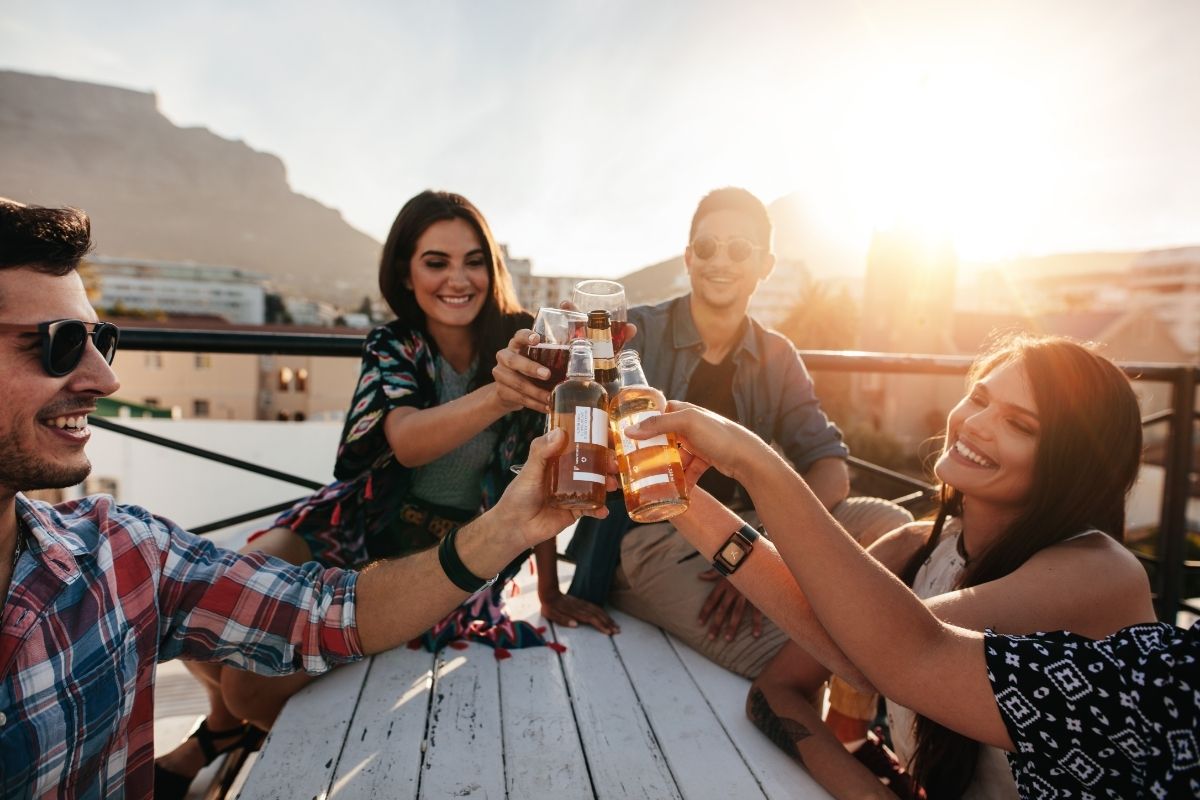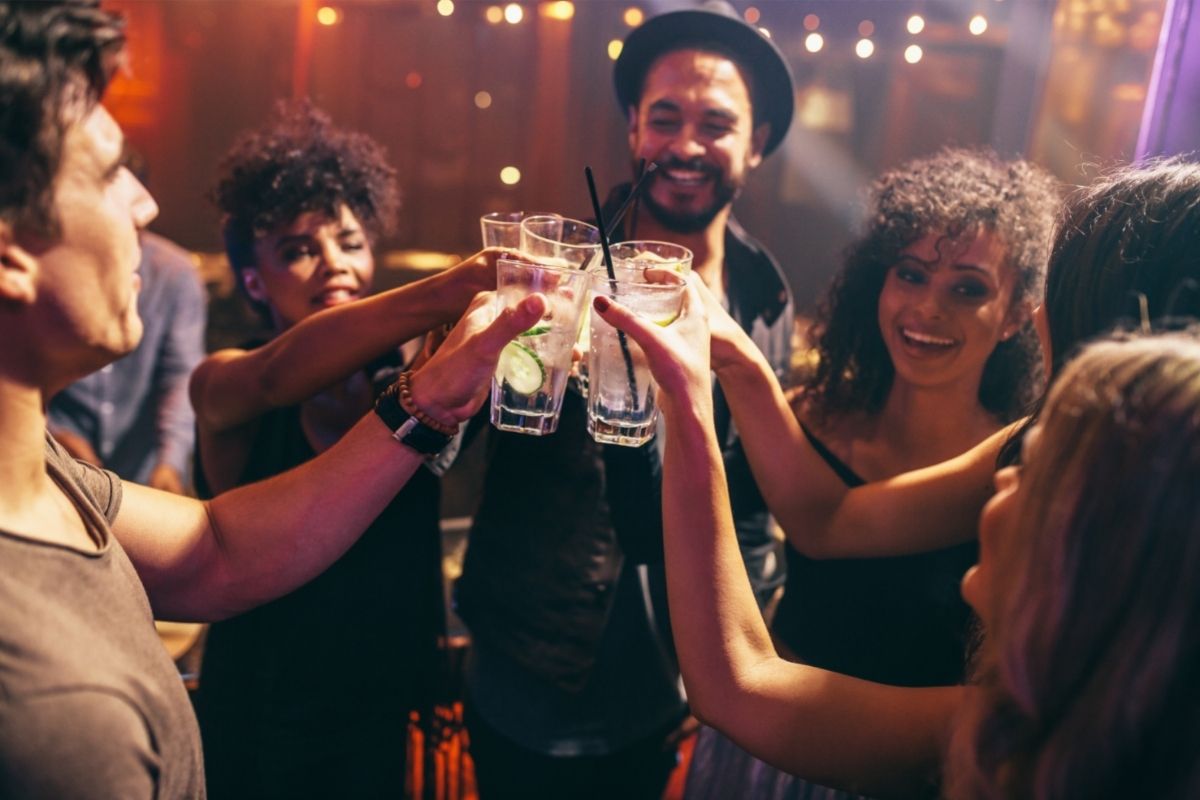Students’ Life in Italy
Wondering how old you have to be to drink alcohol in Italy? Being a student in Italy isn’t just about studying. For this reason, one needs to know the legal drinking age in Italy. Because after hitting the books, students love to party, and what’s a party without alcohol?
Many universities also organize field trips for their students. These adventure trips highlight Italy’s diverse histories, architecture, and natural wonders. Traveling, eating, and drinking are essential aspects of typical student life in Italy. So as a student or any other adult, you need to be aware of the drinking age limit in Italy.

What Does the Law Say About the Legal Drinking Age in Italy?
So what is the drinking age in Italy? You may be perplexed to learn that the legal drinking age in the country is 16 years old, making it one of the world’s youngest legal drinking ages. It is slightly younger than the legal age in many countries.
Furthermore, there is no harsh penalty for minors under 16. They can drink as long as they’re with their parents. Italy is a liberal country when it comes to minors drinking. Many children in the country regularly consume alcohol, particularly on special occasions.
It is part of the country’s cultural practice, and this laid-back attitude is entirely typical in Italy.
According to Italian law, a restaurant owner or bartender can face jail time if they serve alcohol to customers under 16 and people with mental disabilities. As a result, some restaurants and establishments may refuse to serve minors even if their parents accompany them, but not all.
Of course, this is not the case in other countries, such as the United States, where minors are not permitted to consume alcohol. Moreover, there is no significant cultural tradition, at least in recent years, of children drinking alcohol for the sake of pleasure.
In Italy, however, things are very different. There are rules to protect minors, but drinking is more a social activity than an offense.
Locals under the age of 16 are not permitted to purchase alcohol in Italy because the drinking age limit in Italy is 16. Even though it is illegal for minors to buy alcohol in the country, it may occur because some sellers do not care enough to check customers’ ages. Fake IDs are not as common in Italy as in the United States.
It is not usually necessary because minors’ parents purchase alcohol and consume it at home. However, keep in mind that while minors face no direct penalties or illegal charges for drinking alcoholic beverages in public, if someone finds them drinking, they must be identified by authorities and, preferably, returned to their parents.
In Italy drinking age is significantly lower than in the United States and most other countries. The significant difference between Italian law and most other countries’ legislation is that, while it is illegal to sell alcohol to minors, it is not illegal to drink if you are under 21 years old.
So, a foreigner might wonder, why don’t Italian teenagers and young adults have a massive drinking problem? It all comes down to mindset, lifestyle, and ancestry. In a nutshell, local culture.
The Secret Afternoon Snack of Italian Minors
Vineyards cover the majority of Italian regions. The Italians have grown up with wine– today, yesterday, and a century ago. There’s wine on the table, casks in the cellar, grapes to pick, and Grappa to make.
A slice of bread with a spoonful of red wine and a spoonful of sugar was a favorite classic Tuscan afternoon snack for children that is much healthier than supermarket-bought packaged cookies.
How old do you have to be to drink? It is challenging to ascertain a legal drinking age in Rome, Italy. Wine is present at lunch and dinner, sparkling wine for birthdays, sweet wine with dessert, and everyone at the table can drink it.
But, and this is the critical point, everyone drinks in moderation. You have one glass, two glasses, teens have some, children have a sip, and grandma uses her finger to wet baby’s lips for a toast. Everyone has some, moderately!
Where to get Alcohol in Italy
- At the bar/cafè: You can have a glass of wine, a craft beer, a cocktail, or a glass of liqueur at any time of day in almost all bars and cafés in Italy. Some places are more specialized in drinks and will have a better selection, so you’ll need to find your way around first. A gin and tonic at 10 AM are clearly out of the ordinary. L’aperitivo, or meeting friends for a pre-dinner (or sometimes pre-lunch) drink with a snack, is customary, traditional, and very friendly and fun. Aperol Spritz, Americano, Negroni, White Wine, and Prosecco are popular Italian aperitivo drinks. There are numerous aperitivo bars where you can get a full spread of snacks, tidbits, cheeses, cured meats, and so on for free.
- At the restaurant: Wine is available on the menus of all Italian restaurants, trattorie, and osterie. Wine lists are available at fancier/more specialized establishments. After a delicious meal, you can unwind with a dessert wine, such as Moscato or Passito di Pantelleria, or a digestivo (digestive drink). It can be a herb-infused liqueur or a fruit liqueur, such as Nocino or Limoncello.
- At pubs, bars, and clubs: Cocktails, beer, prosecco, and some wines are available at the pub, club, or disco after dinner, in the evening, and throughout the night. You usually pay for each drink in a pub or club, whereas your disco entrance ticket includes one drink. Many bars, cafés, and restaurants have outdoor seating where you can enjoy your wine or drink freely and comfortably.
- At supermarkets: Wine, beer, and liqueurs are available at supermarkets and alimentari– grocery stores. Go to an enoteca if you want a great selection of outstanding quality wines, prosecco, or champagne.

Italian Drinking Customs
Aside from knowing the legal drinking age in Italy, there are a few other things to know to help you blend in and enjoy the local culture:
- “Salute,” “Buona Fortuna,” or “Cin Cin” (pronounced “chin-chin”) is said when clinking glasses.
- When clinking glasses during a toast, look in the eyes of the person you’re drinking with, as a general rule of etiquette. This trait is related to earning trust and is found in various countries. However, many regard it as a superstition. Failure to do so may bring bad luck in both Italy and Germany.
- If you’re going to be in Italy for a while, you should get used to aperitivo. In this country, drinking always goes with a meal. Before having a proper dinner, Italians enjoy gathering in bars for a quick drink and a snack. Aperol Spritz, a bright orange mix of Aperol, Prosecco, soda, and orange, is a popular aperitivo drink. The refreshing cocktail is so popular that it is found in many bars’ menus worldwide.
- Similarly, a digestivo or digestive drink comes after a delicious meal. These are usually herb-infused liqueurs known for their digestive properties. As a result, drinking them is an excellent way to cap off a rich meal. Nocino, Limoncello, and Galliano are popular digestives. A dessert wine, such as Moscato d’Asti, is an excellent alternative to the traditional liqueur-based digestivo.
What to Drink in Italy
Italian drinks are essential in Italian culture. Everyone enjoys Italian food all over the world. Who can say no to spicy, crispy crostini, a wickedly decadent plate of pasta, and, of course, a large slice of freshly baked pizza? But another intriguing question is, what are the traditional Italian drinks?
Since you already know the answer to the question, what is the drinking age in Italy, you may be wondering what drinks you should choose. If you have never been to Italy, keeping you away from the many delicious wines may be challenging.
However, anyone who has visited this lovely country knows that, like their food, Italians take their drinks very seriously. As a result, there are numerous fantastic concoctions to try. Furthermore, every meal in Italy is considered a social event that can last for hours. Therefore, it is a norm to begin the meal with an aperitif to stimulate the appetite.
Cocktails, wine, liqueurs, any Italian mixed alcoholic drink for adults, or Italian non-alcoholic drinks for minors, can be served as aperitives. In Italy, one of the most popular cocktails is the Bellini. It’s a champagne and peach puree concoction.
Campari is another must-have on your list of Italian drinks. With a 25% alcohol content, it goes well with wine, soda water, or cocktails. Try Limoncello, a popular lemon-based liquor from Southern Italy, to enjoy citrusy flavors.
When dinner arrives, the wine begins to flow. If you want to sample the most famous Italian wine, try Chianti. Originally made from white grapes, this Tuscan wine comes from red grapes. However, over time, it evolved into a delectable red wine. Many like to serve it with red meat or creamy pasta.
If you’re having a lighter meal, such as fish or seafood, a dry white wine like Pinot Grigio will be ideal. Finally, Asti Spumante is a must-try sparkling wine.
Coffee is another popular beverage in Italy. If you want to try something more daring, you could add a drop of alcohol to it. You can use nut liqueur or cognac, but Bailey‘s and Vov are also famous.

Cin-Cin (Cheers!)
As you can see, the legal drinking age in Europe, particularly the drinking age in Italy, differs from the legal drinking age in the rest of the world. The Italian society considers alcohol enjoyment a part of culture rather than an offense as long as you do it in moderation, of course!
However, as a visitor to Italy, you must follow the law, even if the drinking age regulations in Italy are not as strict as in other countries such as America. In any case, drinking is not always necessary for people to have a good time!

Community of passionate writers and content creators who share a love for Italian heritage, culture, travel, food, and the Italian-American community. Our mission is to celebrate Italy’s rich history and traditions and connect with others who share the same passion.

